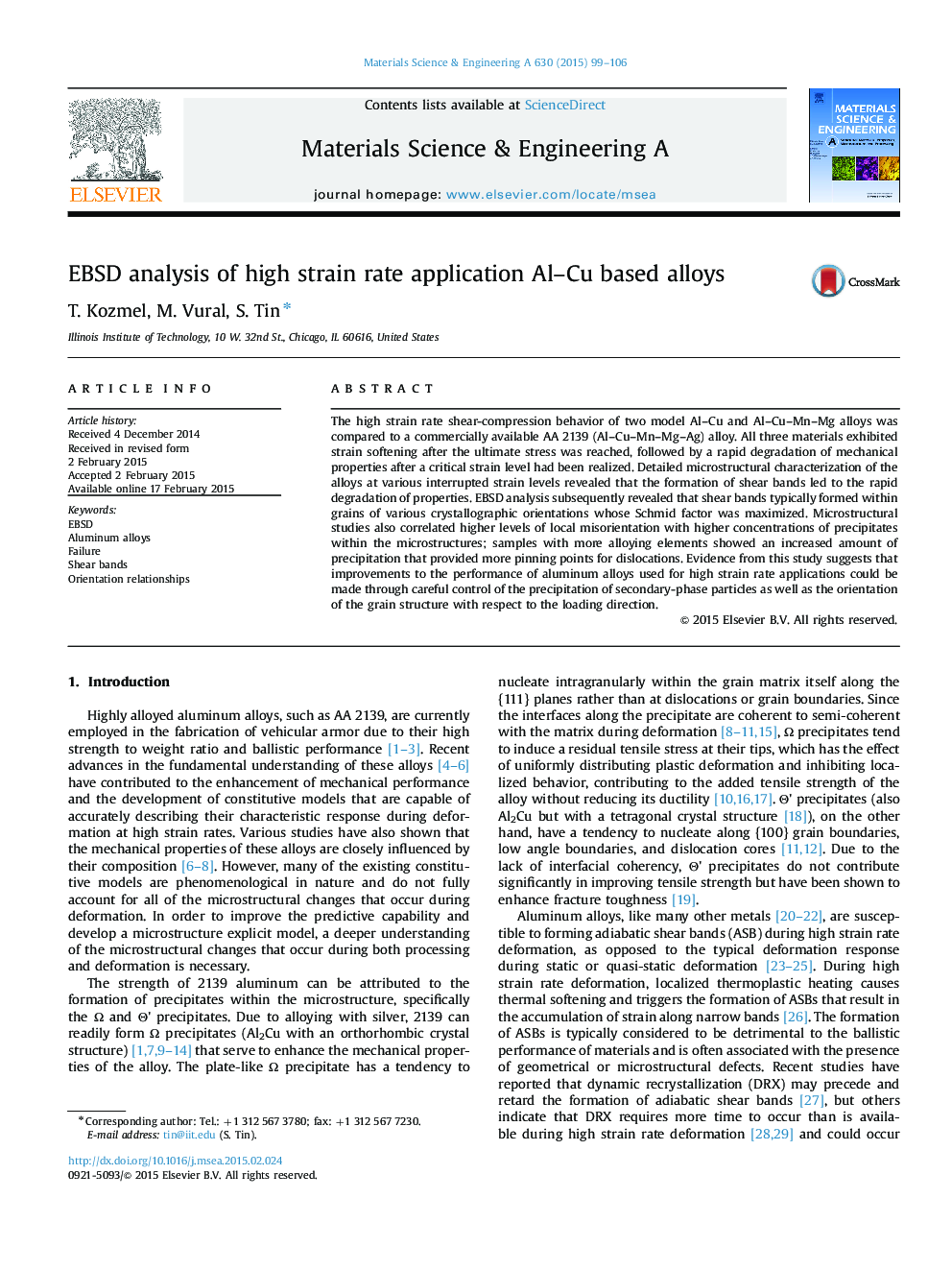| Article ID | Journal | Published Year | Pages | File Type |
|---|---|---|---|---|
| 1574447 | Materials Science and Engineering: A | 2015 | 8 Pages |
Abstract
The high strain rate shear-compression behavior of two model Al-Cu and Al-Cu-Mn-Mg alloys was compared to a commercially available AA 2139 (Al-Cu-Mn-Mg-Ag) alloy. All three materials exhibited strain softening after the ultimate stress was reached, followed by a rapid degradation of mechanical properties after a critical strain level had been realized. Detailed microstructural characterization of the alloys at various interrupted strain levels revealed that the formation of shear bands led to the rapid degradation of properties. EBSD analysis subsequently revealed that shear bands typically formed within grains of various crystallographic orientations whose Schmid factor was maximized. Microstructural studies also correlated higher levels of local misorientation with higher concentrations of precipitates within the microstructures; samples with more alloying elements showed an increased amount of precipitation that provided more pinning points for dislocations. Evidence from this study suggests that improvements to the performance of aluminum alloys used for high strain rate applications could be made through careful control of the precipitation of secondary-phase particles as well as the orientation of the grain structure with respect to the loading direction.
Related Topics
Physical Sciences and Engineering
Materials Science
Materials Science (General)
Authors
T. Kozmel, M. Vural, S. Tin,
